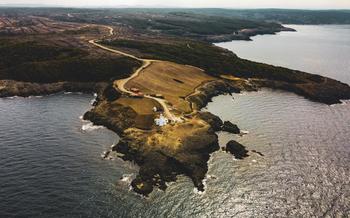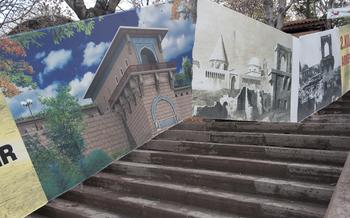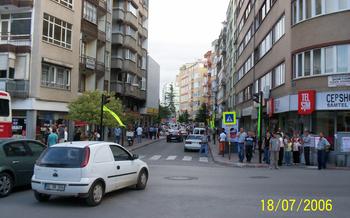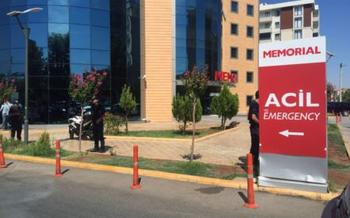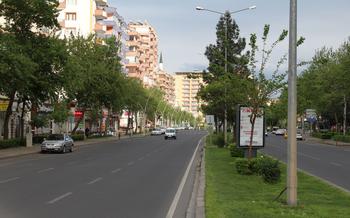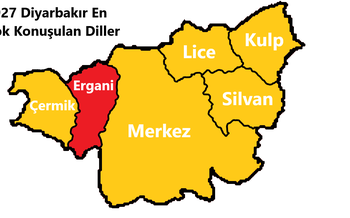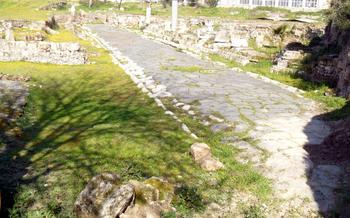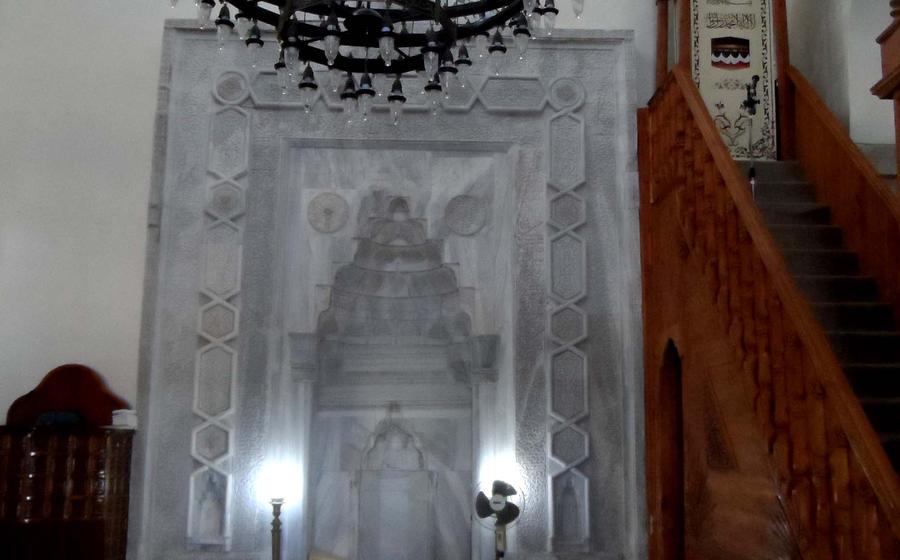
Alaaddin Mosque
- Explore the Rich History of the Alaaddin Mosque
- Architectural Features
- Interior Decorations
- Religious Significance
- Cultural Importance
- Historical Context
- Restoration and Preservation
- Local Legends and Folklore
- Nearby Attractions
- Photography Opportunities
- Educational Programs
- Accessibility
- Local Cuisine
- Insider Tip: Unearthing Hidden Gems
Explore the Rich History of the Alaaddin Mosque
Journey back in time as you step into the Alaaddin Mosque, a testament to the enduring legacy of the Seljuk Empire. Built in the 13th century, this architectural masterpiece stands as a symbol of Islamic heritage in Sinop. Its construction marked a significant chapter in the city's history, showcasing the Seljuks' architectural prowess and their commitment to fostering Islamic spirituality. Today, the Alaaddin Mosque remains a source of pride for the local community, embodying the rich cultural heritage of Sinop and its people.
Architectural Features
The Alaaddin Mosque boasts stunning architecture that showcases the intricate stonework and carvings characteristic of Seljuk design. The mosque's minaret, a slender tower that rises gracefully towards the sky, is a striking feature of the skyline. Its fluted shaft and intricate carvings display the exceptional craftsmanship of the Seljuk builders. The mosque's dome, a symbol of Islamic architecture, is another breathtaking element. Its hemispherical shape and intricate geometric patterns create a sense of awe and grandeur. The mosque's overall design, with its harmonious proportions and elegant lines, exemplifies the architectural brilliance of the Seljuk era.
Interior Decorations
The Alaaddin Mosque's interior is a testament to the rich artistry and craftsmanship of the Seljuk period. Its walls are adorned with colorful tiles, each intricately patterned and arranged in harmonious designs. The mihrab, the niche indicating the direction of Mecca, is a masterpiece of Islamic art. It is carved from a single piece of marble and features intricate geometric patterns and delicate floral motifs. The minbar, the pulpit from which the imam delivers sermons, is equally impressive. It is made of wood and features intricate carvings depicting scenes from Islamic history.
The mosque's ceiling is also adorned with beautiful decorations. It is painted with vibrant colors and features intricate geometric patterns. The overall effect is one of awe and inspiration. The Alaaddin Mosque's interior decorations are not only aesthetically pleasing but also have deep religious and cultural significance. The tiles, carvings, and paintings all serve to glorify God and create a sacred space for worship and contemplation.
Religious Significance
The Alaaddin Mosque holds immense religious significance for the Muslim community in Sinop. As a place of worship, it serves as a sanctuary for believers to connect with their faith. The mosque hosts daily prayers, including the obligatory five daily prayers and special congregational prayers on Fridays. During Ramadan, the mosque transforms into a vibrant hub of activity, with extended prayer sessions, communal meals, and spiritual gatherings. Throughout the year, the mosque also organizes religious classes, lectures, and workshops to educate and inspire its congregation. The Alaaddin Mosque is a place where the community comes together to celebrate Islamic holidays, share religious experiences, and strengthen their spiritual bond. Its presence in the heart of Sinop serves as a reminder of the city's rich Islamic heritage and the deep faith of its people.
Cultural Importance
The Alaaddin Mosque stands as a proud symbol of Turkish-Islamic heritage, deeply embedded in the cultural fabric of Sinop. Its architectural grandeur and religious significance have made it a revered landmark, attracting visitors from near and far. The mosque is often the focal point of cultural events and festivals that celebrate the city's rich history and traditions. During the annual Sinop Festival, the mosque becomes a vibrant hub of activity, hosting exhibitions, performances, and workshops that showcase the city's cultural diversity. Throughout the year, the mosque's courtyard serves as a venue for religious gatherings, community events, and educational programs, fostering a sense of unity and belonging among the local population. The Alaaddin Mosque is not just a place of worship; it is a living testament to the enduring legacy of Islamic culture in Sinop, serving as a bridge between the city's past and present.
Historical Context
The Alaaddin Mosque stands as a testament to the rich historical tapestry of Sinop, a city that has witnessed the rise and fall of civilizations throughout the ages. Its location within the city's historical center is no coincidence, as it reflects the crucial role that religion and culture have played in shaping Sinop's identity.
The city's strategic position on the Black Sea coast made it a coveted prize for various empires and kingdoms, including the Romans, Byzantines, and Ottomans. Each civilization left its mark on Sinop's architecture and culture, creating a unique blend of influences that can still be seen today.
In the 13th century, the Seljuk Turks, who ruled over much of Anatolia at the time, conquered Sinop and made it a part of their vast empire. It was during this period that the Alaaddin Mosque was constructed, becoming a symbol of the city's newfound Islamic identity.
Throughout history, the mosque has witnessed countless events and played a central role in the lives of Sinop's inhabitants. It has served as a place of worship, a center for religious learning, and a gathering place for the community. Its enduring presence speaks to the resilience and continuity of Islamic traditions in Sinop despite the many changes the city has undergone over the centuries.
Restoration and Preservation
Over the centuries, the Alaaddin Mosque has undergone several restoration and preservation efforts to maintain its architectural integrity and historical significance. In the late 19th century, major renovations were carried out to address structural damage and deterioration caused by time and natural disasters. These efforts included reinforcing the mosque's foundations, repairing the minaret, and restoring its intricate stonework. In the 1970s, a comprehensive restoration project was undertaken by the Turkish government, focusing on preserving the mosque's original features while addressing modern conservation standards. This project involved meticulous cleaning and restoration of the mosque's interior decorations, including the colorful tiles, calligraphy, and intricate carvings. Ongoing maintenance and conservation work is regularly carried out to ensure that the Alaaddin Mosque continues to stand as a testament to the rich history and architectural heritage of Sinop.
Local Legends and Folklore
The Alaaddin Mosque is not only a place of worship but also a source of local legends and folklore that have been passed down through generations. One popular story tells of a pious man named Alaaddin, who devoted his life to building the mosque. According to legend, Alaaddin faced many challenges during the construction, including a shortage of funds and materials. However, he persevered with the help of supernatural beings, who provided him with the resources he needed to complete the mosque.
Another legend associated with the mosque is the story of a hidden treasure. It is believed that a vast fortune was buried beneath the mosque by a wealthy merchant who wanted to protect his riches from invaders. Many have tried to find the treasure, but none have succeeded. Some say that the treasure is guarded by a powerful djinn, who will only reveal its location to those who are pure of heart.
These local legends and folklore add to the mystique and appeal of the Alaaddin Mosque. They remind visitors that the mosque is not just a historical monument but also a place where the spiritual and the supernatural intertwine.
Nearby Attractions
After marveling at the beauty of the Alaaddin Mosque, take some time to explore other captivating attractions in Sinop. A short walk from the mosque, discover the historic Sinop Castle, a magnificent fortress that once guarded the city from invaders. Climb its ancient walls and soak in breathtaking panoramic views of the city and the Black Sea.
Just a stone's throw away, immerse yourself in the rich maritime history of Sinop at the Sinop Naval Museum. This fascinating museum showcases a collection of artifacts, models, and interactive exhibits that narrate the city's naval legacy. Learn about the heroic sea battles that took place in these waters and admire the intricate craftsmanship of traditional Turkish boats.
For a glimpse into Sinop's vibrant cultural heritage, visit the Sinop Ethnography Museum. Housed in a charming old mansion, this museum displays an array of traditional costumes, handicrafts, and household items that offer insights into the daily lives and customs of Sinop's people.
To experience the natural beauty of the region, embark on a scenic boat tour along the Black Sea coast. Marvel at the stunning landscapes, spot playful dolphins, and capture breathtaking photos of the coastline.
Plan a self-guided walking tour to explore multiple attractions in one day. Start at the Alaaddin Mosque, then visit the Sinop Castle, the Sinop Naval Museum, and the Sinop Ethnography Museum. Conclude your tour with a relaxing boat ride along the Black Sea coast, creating a memorable and enriching experience in Sinop.
Photography Opportunities
The Alaaddin Mosque, with its stunning architecture and picturesque surroundings, offers a myriad of opportunities for photography enthusiasts. Its intricate stonework, graceful minaret, and majestic dome provide a feast for the eyes. The mosque's location, nestled amidst historic buildings and cobbled streets, adds to its visual appeal.
To capture the best shots, plan your visit during the golden hours, just after sunrise or before sunset, when the warm light casts a magical glow on the mosque's facade. Use a wide-angle lens to capture the mosque's grandeur and its harmonious relationship with the surrounding cityscape.
For a unique perspective, head to the mosque's courtyard and look up to capture the soaring minaret against the blue sky. Experiment with different angles and compositions to create dynamic and visually appealing images.
If you're interested in capturing the mosque's intricate details, bring a macro lens to focus on the exquisite carvings, tilework, and calligraphy that adorn its exterior and interior.
Consider joining a photography tour or workshop led by experienced photographers who can guide you to the best vantage points and provide tips on capturing stunning images of the Alaaddin Mosque and its surroundings.
Educational Programs
The Alaaddin Mosque and local organizations offer educational programs and workshops related to Islamic architecture and history, providing visitors with a deeper understanding of the mosque's significance. These programs often include guided tours, lectures by experts, and hands-on activities.
One popular program is the "Islamic Architecture Workshop," which allows participants to learn about the unique features and design principles of Islamic architecture by studying the mosque's structure and decorative elements. Another program, the "History of Sinop Mosque," delves into the mosque's historical context, its role in the city's development, and the notable events associated with it.
Participating in these educational programs enhances the visitor experience by providing a deeper appreciation for the mosque's cultural and historical significance. Visitors can gain insights into the architectural techniques, artistic traditions, and religious practices that shaped the Alaaddin Mosque, making it a symbol of Islamic heritage in Sinop.
To make the most of these programs, visitors are encouraged to check the mosque's website or contact local organizations in advance for schedules and registration information. Some programs may require advance booking, especially during peak tourist season.
Accessibility
The Alaaddin Mosque welcomes visitors from all backgrounds and abilities. The mosque is wheelchair accessible, with ramps and elevators providing easy access to all areas of the building. Visitors with disabilities can also request assistance from the friendly mosque staff, who are always willing to help.
In addition, the mosque provides a variety of services to make the visit more enjoyable for people with disabilities. These services include:
- Audio guides: Audio guides are available in multiple languages, providing detailed descriptions of the mosque's history, architecture, and religious significance.
- Large print materials: Large print materials, such as maps and brochures, are available for visitors with low vision.
- Sign language interpreters: Sign language interpreters can be arranged upon request for visitors who are deaf or hard of hearing.
The Alaaddin Mosque is committed to providing a welcoming and inclusive environment for all visitors. By offering these services, the mosque ensures that everyone has the opportunity to experience the beauty and spirituality of this historic site.
To ensure a seamless visit, visitors with disabilities are encouraged to contact the mosque in advance. This will allow the mosque staff to make any necessary arrangements to accommodate their specific needs.
Local Cuisine
After a spiritual and historical journey through the Alaaddin Mosque, indulge in the culinary delights of Sinop to complete your cultural immersion. The city offers a diverse range of traditional dishes that will tantalize your taste buds and provide a deeper connection to the local way of life.
For a true Sinopian experience, try the famous "Sinop Mantısı," delicate dumplings filled with minced meat and herbs, served with a tangy yogurt sauce. Another must-try is "Balık Çorbası," a hearty fish soup made with fresh local catch, vegetables, and aromatic spices.
To satisfy your sweet tooth, explore the local pastry shops and indulge in "Şekerpare," a delectable dessert made with semolina flour, sugar syrup, and a hint of lemon zest. "Güllaç," a traditional Turkish dessert made with layers of thin pastry sheets, milk, and rose water, is another local favorite.
When in Sinop, take advantage of the opportunity to dine at one of the many restaurants located in the vicinity of the Alaaddin Mosque. These establishments offer a charming ambiance and a chance to savor authentic Turkish cuisine while immersing yourself in the city's vibrant atmosphere.
Insider Tip: Unearthing Hidden Gems
Beyond the awe-inspiring Alaaddin Mosque, Sinop holds a treasure trove of hidden gems waiting to be discovered. One such gem is the picturesque Sinop Castle, nestled atop a hill overlooking the mesmerizing Black Sea. This 7th-century fortress boasts breathtaking views, ancient ramparts, and a captivating history intertwined with the city's rich past. As you explore its ruins, imagine the echoes of battles fought and the stories of those who once guarded these walls. For a truly unique experience, venture into the narrow cobblestone streets of the old town, where charming cafes, artisan workshops, and hidden courtyards await. Get lost in the labyrinthine alleys, savor the aroma of freshly brewed Turkish coffee, and uncover the secrets that Sinop whispers to those who dare to explore beyond the beaten path.

